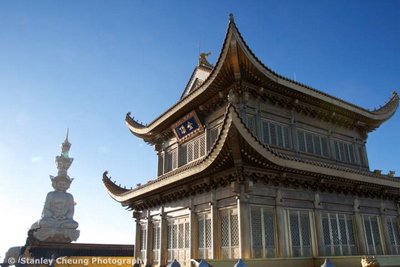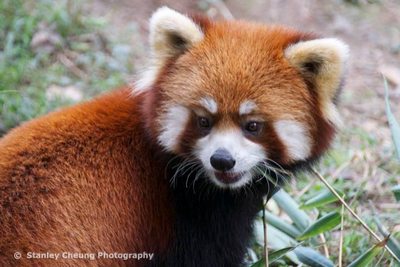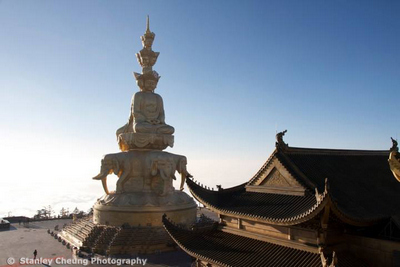Home > Destinations > Asia > China > 7-Days Pandas and Buddhas of Sichuan



7-Days Pandas and Buddhas of Sichuan
Chengdu -Bifengxia - LeShan- Mt Emei- Chengdu
成都 ~ 碧峰峽~ 樂山大佛 ~ 峨眉山
| Day 01 | Arrival Chengdu 成都 |
Upon arrival at Chengdu, you will be met and transfer to your hotel for stay.
Welcome by your guide and transfer to the hotel.
Welcome to Chengdu, capital of Sichuan province and ancient capital of the powerful Shu Kingdom. Chengdu has had the same name for over two millennia, which is proof of not only its longevity but also the major role that it has always played in the region.
This venture will provide excellent opportunities to try some of the specialties of the region and its famous food culture. Sichuan cooking is one of the eight major strands of cooking in the country, and is famous for being very spicy…
In the evening you will try mapo doufu, a traditional Sichuanese dish comprising of fresh tofu, minced beef and soy served in a sauce of garlic, peppered oil and Sichuan peppercorns.
Overnight in Chengdu
| Day 02 | Chengdu 成都 |
Walk in the People’s Park, a perfect example of the parks where the Chinese practice Tai-Chi, Kung-fu, sword dance, meditation, dance, gymnastics… all activities that they consider essential to their well-being.
In the morning you will visit the archaeological site of Sanxingdui close to the town of Guanhan Here hundreds of objects dating from as early as 2000BC have been found including pottery, jade sculptures and statues… The site was discovered in the 1930s, but it was in 1986 that the most spectacular discoveries were made. In particular these include a fabulous collection of masks and a “divine tree” made of bronze unique to China. This is evidence of the most advanced techniques available to the Shang (Chinese dynasty from the 17th-11th century BC), also attesting to the existence of a mysterious parallel culture in Sichuan province (still called Shu country) that fascinates scientists. Numerous exhibitions have been organised all over the world since this discovery that some consider to be as important as that of the Terracotta Warriors in Xi’an!
Return to Chengdu and visit to the Wenshu Temple (or Manjushri to the Indians), the best preserved Buddhist temple in Chengdu that still boasts a large number of worshippers. You will have a cup of tea in the House of Tea next door (the city has many such establishments and this is one of the most popular) before dining in the garden of the vegetarian restaurant in the temple (depending on time) after you have had a little time to familiarise yourself with the precepts of Buddhism.
Overnight in Chengdu.
| Day 03 | Chengdu 成都 - Bifengxia 碧峰峽 |
Morning departure for Bifengxia,. Upon arrival you will take the elevator, located behind the ticket office, which in a matter of seconds will take you to the heart of the gorge which constitutes the other major point of interest of the site. You will walk from here for 60-90 minutes, depending on your own speed, through an enchanting landscape: a crystal-clear river, luxuriant greenery, and the steep cliffs of the gorge hollowed out by waterfalls whose mist sometimes seeps enchantingly across the site.
Depending on the weather you can have a picnic in the tranquil pure air…
Note: the site is humid and the stone walkways can sometimes be a little slippery, and as such we recommend that you wear good walking shoes.
You can also get to the centre by bus on the main road if you would prefer to not take part in the walk.
Arrival in the Centre that boasts slightly fewer than 100 pandas, making it the largest centre for Pandas in captivity in the world. The panda (“xiongmao” in Chinese, literally meaning “bear-cat”) is an endangered species that the Chinese Government and specialist NGOs have been consciously protecting since the 1980s.Their efforts have been rewarded and the latest population counts have shown an increase of nearly 50% in the number of pandas in the world (it is reckoned that there are more than 2000 living in the wild, although it is hard to give an exact figure).
Pandas’ nourishment comes almost exclusively from bamboo, unstoppably eating throughout the entire day, consuming up to 40kg a day.
Your volunteer programme will start at the beginning of the afternoon with a short meeting with an officer from the centre who will give you security instructions and tell you a little more about both the role of the centre and how the panda has become a true symbol of China.
You will then be able to feed the pandas (fruit and bamboo), prepare their bath, wash their enclosures and take part in their daily weigh-in! These activities may be modified depending on the needs and priorities of the centre on the day of your visit.
Return to the park entrance by one of the park busses and transfer to the hotel.
Overnight in Bifengxia
Distance and journey time:
Chengdu city - Bifengxia (approx 150km/2 hrs 30 mins)
| Day 04 | Bifengxia 碧峰峽 / Leshan 樂山 / Emeishan 峨眉山 (altitude of 3099m) |
Departure for Leshan, You will see here the largest Buddha statue in the world, carved into the side of a cliff more than 1200 ago to calm the anger of the Min River, which had inflicted floods upon the locals and mariners. The Giant Buddha, as it is commonly known, measure in at 71m (231ft) high and 28m (92ft) wide – truly a stone giant! You can get up close to its face to admire its 7m (23ft) long ears, while taking the stairs down will let you get a real taste for the scale of this piece of art and will take you near to the toes, which alone measure 8.5m (28ft) high.
Optionally: you can also admire the Giant Buddha from the Min River, on board a boat intended for this purpose. Consult us if you are interested.
You will then take a pleasant forest track through the Oriental Buddha Park, dotted with some small temples, thousands of small statues and the gargantuan artwork that is a lying-down Buddha which is over 170m long (558ft) and which is, amongst similar works, the most impressive in the world.
Journey on to Emeishan.
Depending on your choice of hotel you will either stay at the foot or the summit of Emei Mountain.
Overnight in Emeishan
Distance and journey time:
Bifengxia - Leshan (approx 200km/3 hrs 15 mins)
Leshan - Emeishan (approx 45km/01 hours)
| Day 05 | Mt Emei 峨眉山 |
During the 6th century AD, Emei Mountain was associated with Puxian (Samanthabara for Indians), a Bodhisattva often represented by a white elephant with six tusks.
The site is one of the four Sacred Buddhist Mountains of China and is still a major place of pilgrimage today. Most of its temples and monasteries date back to the Ming and Qing Dynasties (1368-1644 and 1644-1911 respectively), and they are linked by more than 50km (31 miles) of stairs and mountain pathways.
You will alternate between walking, bus and cable-car over the course of the day in order to best discover the major temples and the pine forest, usually shrouded in a magical haze. You will probably also see Tibetan macaques along the route, but it is advisable not to feed them, or produce anything (such as a plastic bag) that looks like it may contain food, or indeed anything that looks like food if you do see them. This is the only way to be sure to avoid paying the fees of passage imposed by these increasingly gourmet monkeys!
You will be taken with your guide by bus to the Baoguo Temple (literally “proclamation of the Nation”). It is located outside the heart of a beautiful garden and is known for its porcelain Buddha, made in the famous imperial furnaces of Jingdezhen.
Transfer by bus then cable-car to the Wannian Temple (literally “ten thousand years”, an expression that means “longevity” in Chinese) which is the oldest temple on Emei Mountain. There you can admire a bronze statue of Puxian on a white elephant that weighs more than 62 tonnes…
Optionally: depending on the climate and your walking ability we recommend you take a walk (4km/2.5 miles back from the Wannian temple) that will deliver you to the Pavilion of Pure Sound, suspended on a promontory encircled by the Black Dragon and White Dragon Rivers which turn into a waterfall whose sound gives its name to the Pavilion.
Transfer by bus then cable-car to the Jinding Temple located on the peak of the same name (which means “Golden Peak”). In addition to this majestic golden palace covered in glazed tiles and surrounded by marble railings, you can also appreciate the stunning view of the Wanfo peak (lit: ten thousand Buddhas) which at 3099m (10,167ft) high towers over the whole site.
The two peaks are nearly always bathed in a stunning sea of clouds that graces the site with a certain magic…
Optionally: It is possible to spend the night in one of the various monasteries on the mountain. The conditions are somewhat Spartan but the experience makes it worthwhile. Please consult us if interested.
Note: it is recommended that you bring good shoes, especially if you wish to undertake the walk to the Pavilion of Pure Sound.
In the evening you will enjoy a famous Sichuan Hotpot, a much spicier version of hotpot than found in other parts of China!
Overnight in Emeishan
| Day 06 | Mt Emei 峨眉山 ~ Chengdu 成都 |
Breakfast in the hotel and return, by road, to Chengdu.
Accommodation in Chengdu.
| Day 07 | Chengdu/Hong Kong 成都 ~ 香港 |
Free time at leisure till departure transfer to airport.
Have a nice holidays!
Remarks :
Every effort will be made to adhere to the planned itinerary. However, due to weather conditions and reasons beyond our control, changes to the itinerary might occur, for which the company accepts no responsibility.
|
|---|
Newsletter Subscription: 訂閱最新旅遊資訊
Site Map · Privacy Policy 私隱政策(只附英文版)
© 2020 Exotic-Holidays.hk · All Rights Reserved
![]()